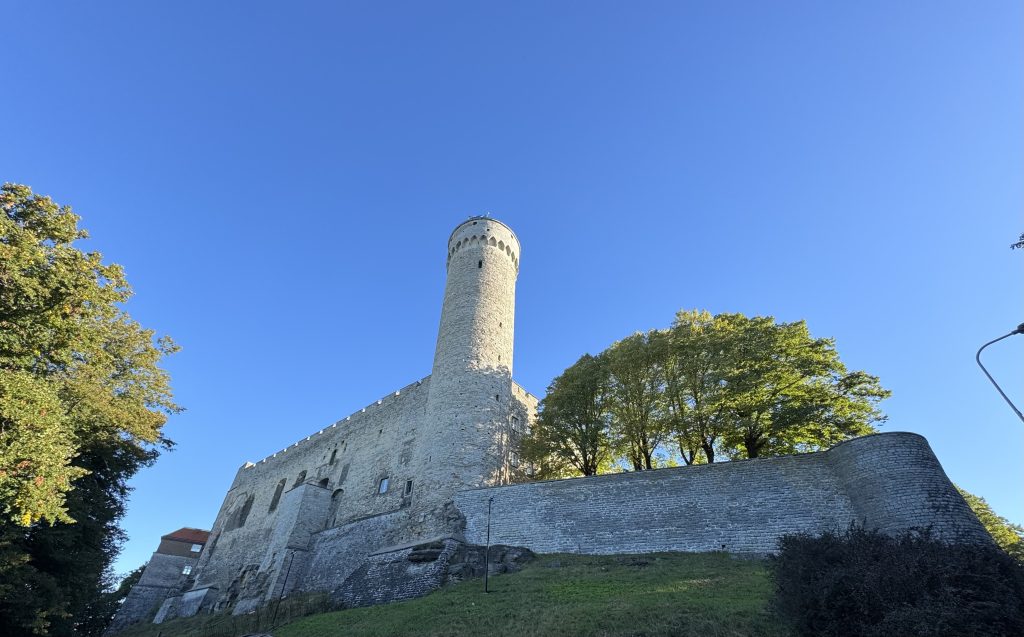
Here I am in beautiful Tallinn, Estonian, after a hideously early morning because TripaDeal booked us on the 7AM ferry. This city is so pretty that it was worth it. It didn’t stop me having a quick restorative nap when I got to the hotel this afternoon, though.
Estonian has roughly the same area as Denmark, but they have 5 million people and Estonian has only 1 million, half of whom live in the capital city of Tallinn.
We had another city guide for a 2 hour walking tour, and she wasn’t long into her spiel about Tallinn’s history when I became aware that these people were some of the unluckiest in history. People kept invading and invading; plagues kept plaguing; the weather is cold and thank god my ancestors didn’t decide to settle here.
Estonia has been occupied by the Danish for around 200 years, back in the 1400’s. Before that… Viking raids.
Then the Swedish had a go for another couple of hundred years in the 1600/1700’s.
Russia then had its turn, until Estonia fought them for 2 years in the early 1900’s and they signed a paper saying that Russia will never touch a single blade of grass on Estonian land ever again, which they totally kept their word on.
LOL, jokes. They came back after WWII and said, “That paper is irrelevant, because we’re not called Russia anymore. We’re the USSR, so we’re making you part of the Soviet Union whether you want to or not.”
Ugh. Russia.
Anyway, the Baltic states gained their independence in the 1990’s, and you can BET they’re keeping a close eye on what’s happening in Ukraine.

But Estonia has one of the best preserved medieval neighbourhoods left in the world, which has made it a Mecca for tourists.
We made straight for the castle, which was built by 12th century crusaders. Yes, crusaders! We normally think of the wars. In the Middle East against the Muslims as being the crusades, but the pope had his greasy little fingers in a few different pies.
The Pope declared a crusade for the pagans living here. The vikings had all turned to Jesus by then, but the people living around here were still worshipping trees and streams and such, as they had done without incident for thousands of years. They were an easy target.
This crusade was led by the Nordic Kings. Tallinn = the Danish Town.
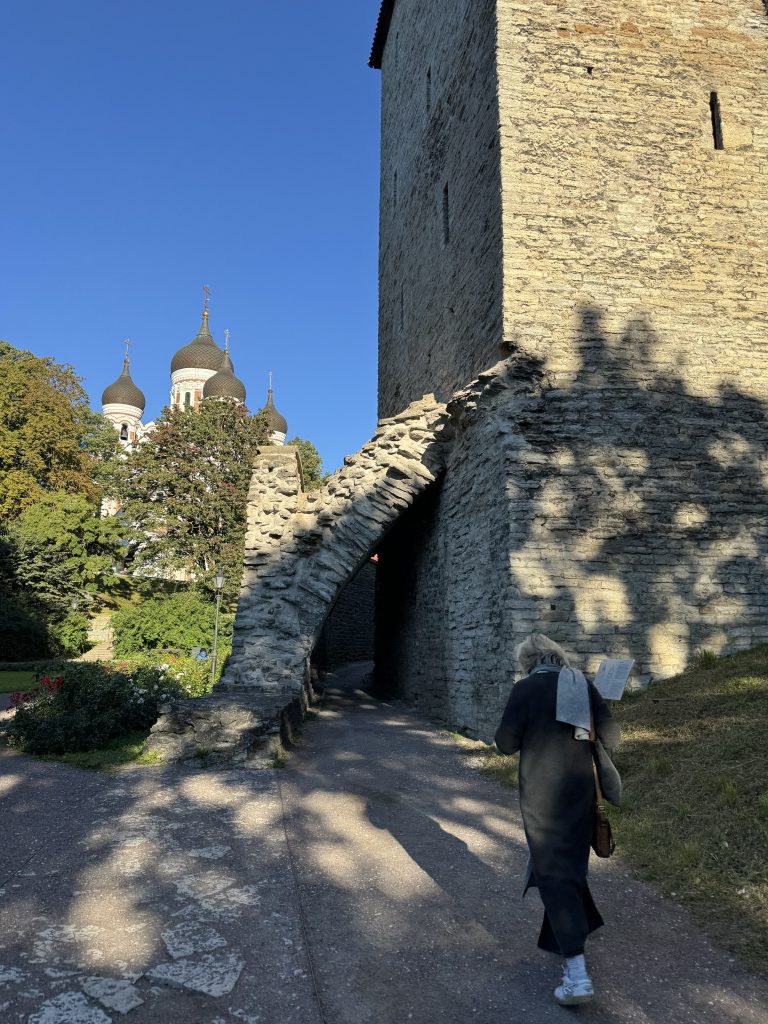
The old part of Tallinn is split into two. The castle on the hill, and Old Town, which is set lower down. The guys in the castle didn’t want to house all the merchants, so they told them to go further down the hill and build their own wall to defend their buildings from invaders.
In 1248 the wall was built so the merchants could defend their shops from invaders. The wall was originally a little over 2kms long, and nowadays 2/3rds of that original wall is still standing.
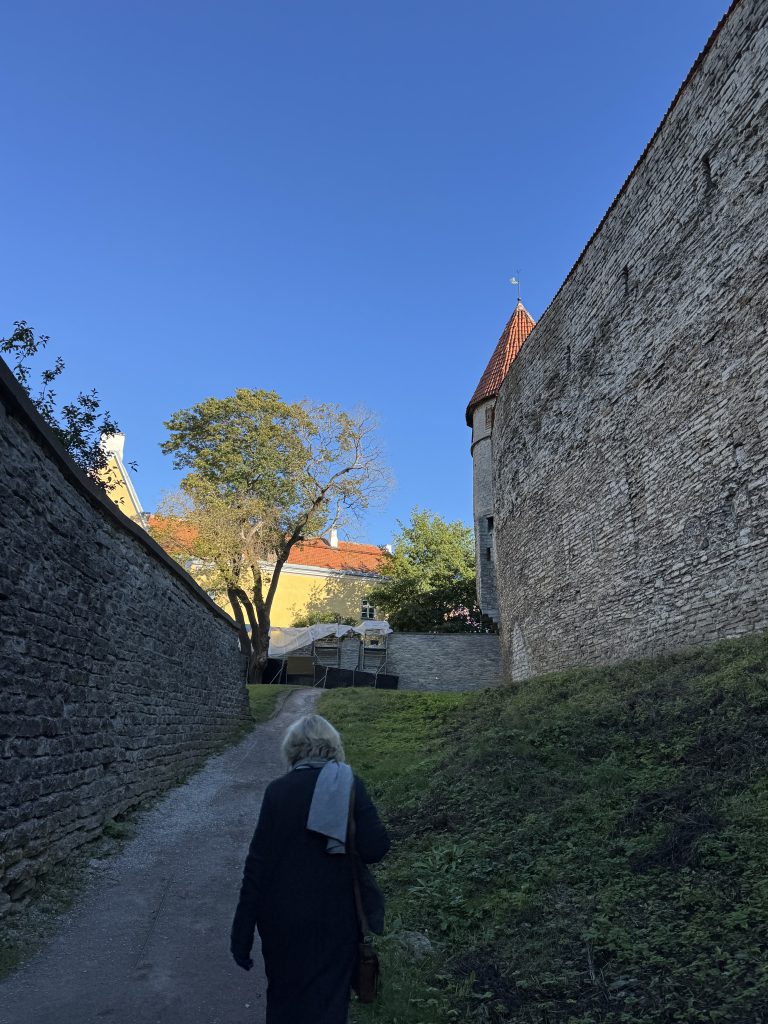
The reason it survived is quite interesting. The wall was defended by merchants, who were there to make money. They didn’t have an emotional connection to the town, which would have made them fight to the last to keep invaders away. Instead, they’d haggle and bargain with invaders, and when a deal was reached, they’d open the gates of the town and let the invaders in. By the rules of war, a city that doesn’t make you fight is one that is treated with clemency, because you haven’t had to waste time and money fighting them.
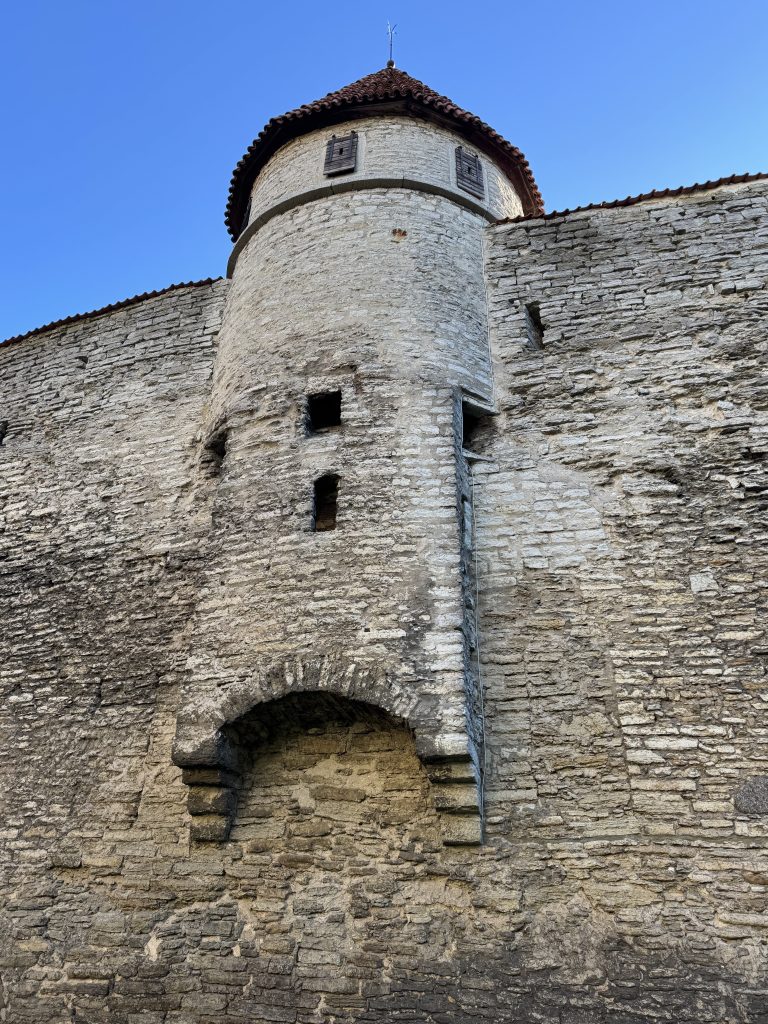
Capitulation or the plague, which also happened occasionally… the town stayed intact. Ironically, WWII inflicted the biggest damage, 13% was destroyed.

We emerged into a garden overlooking Old Town.
This wasn’t the only time we had buskers filling the air with music.
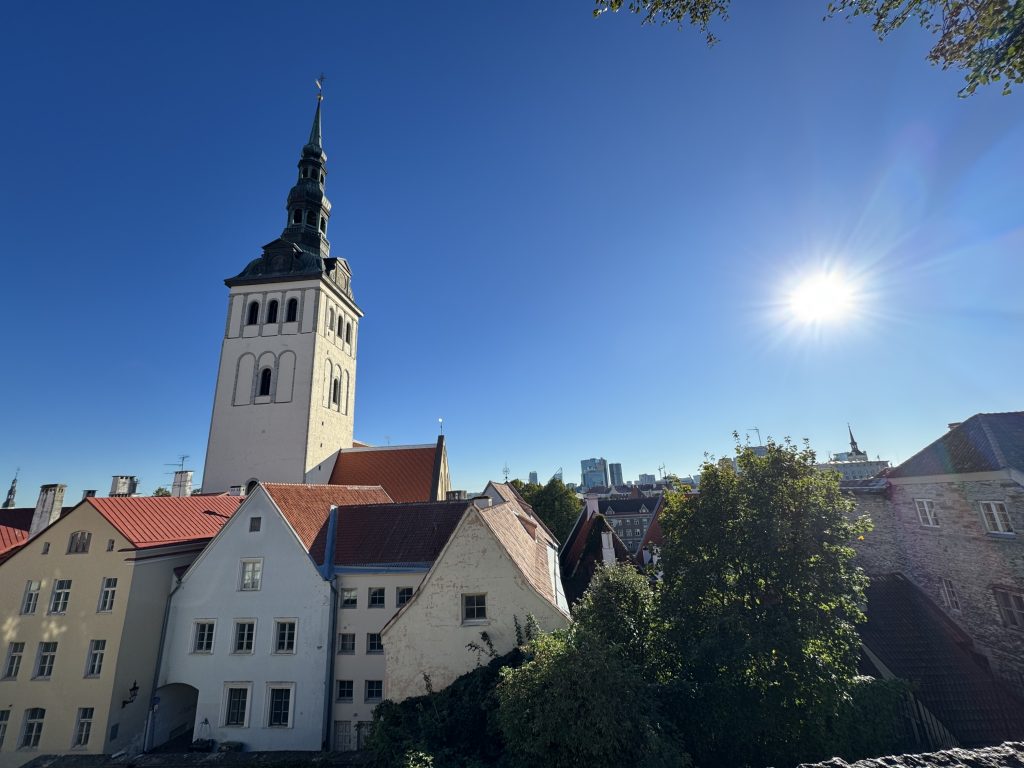
All too soon, we were heading further down the hill.
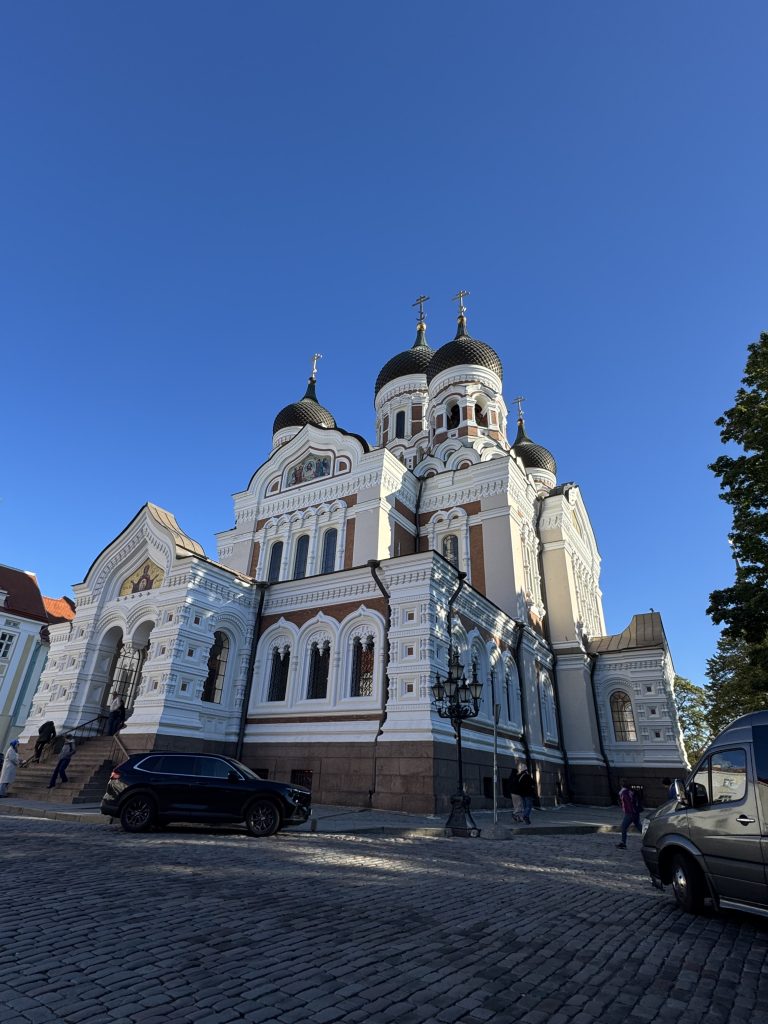
Orthodox cathedral was built by Tsar Alexander, the second last tsar. He wanted a heavily Russianised presence, hence the architectural features. When Russia invaded Ukraine, a lot of ties with Russia were severed here.
24% of the population is Russian speaking. Estonia keeps the church open for them as a sign of respect and tolerance.
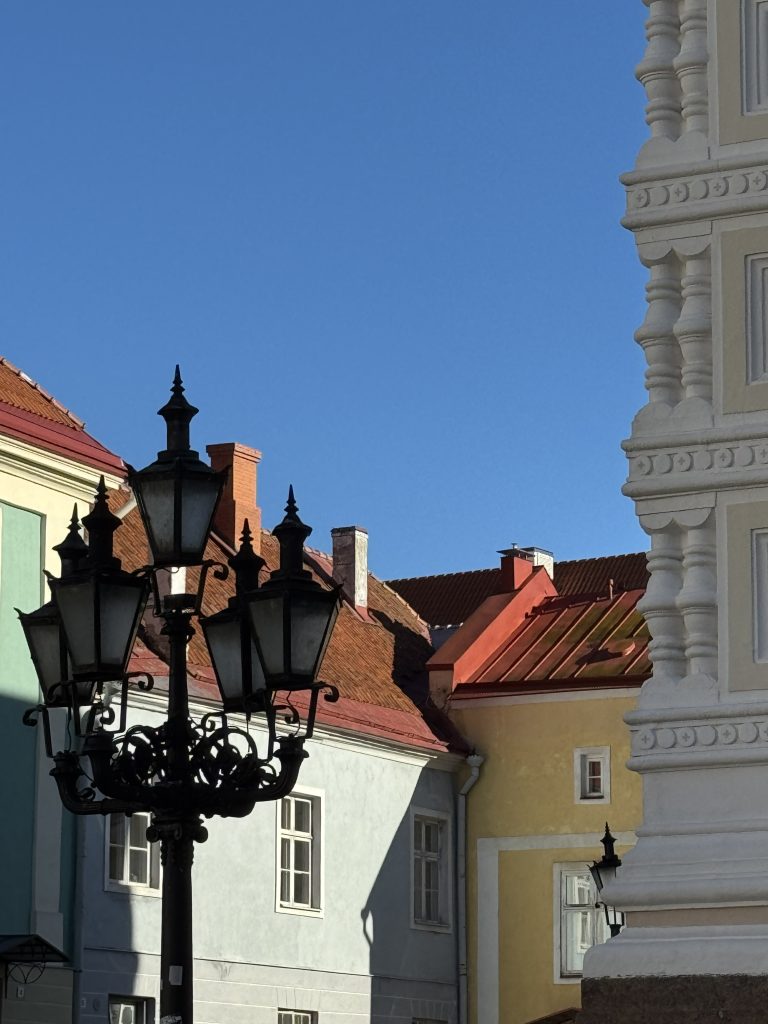
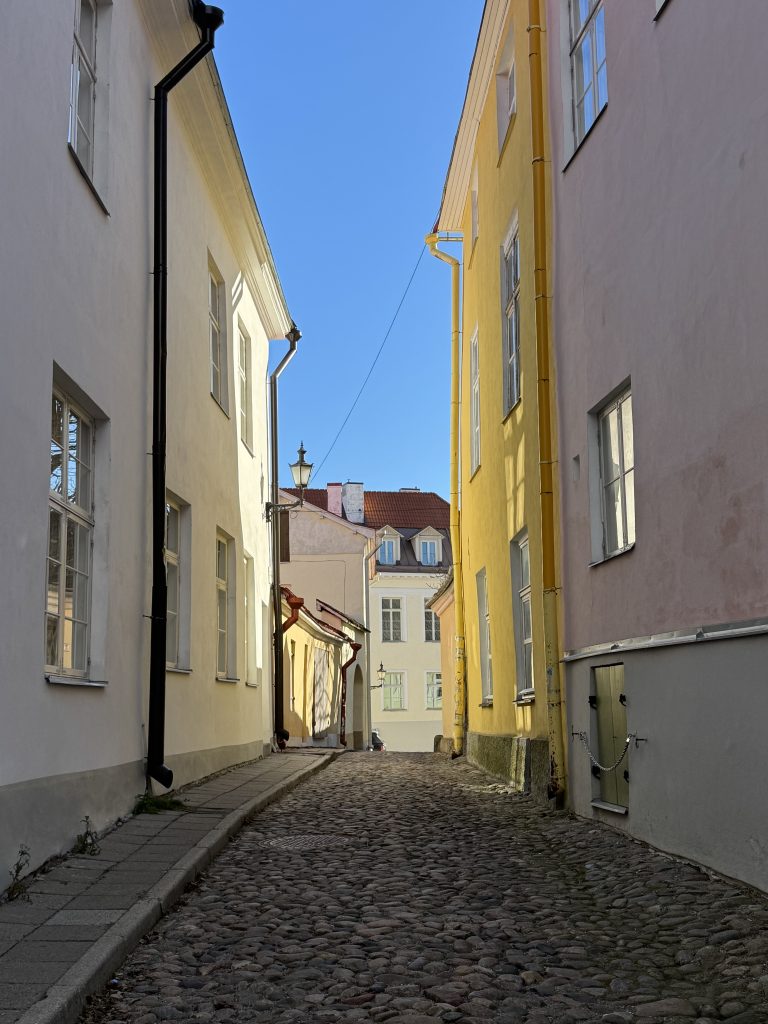
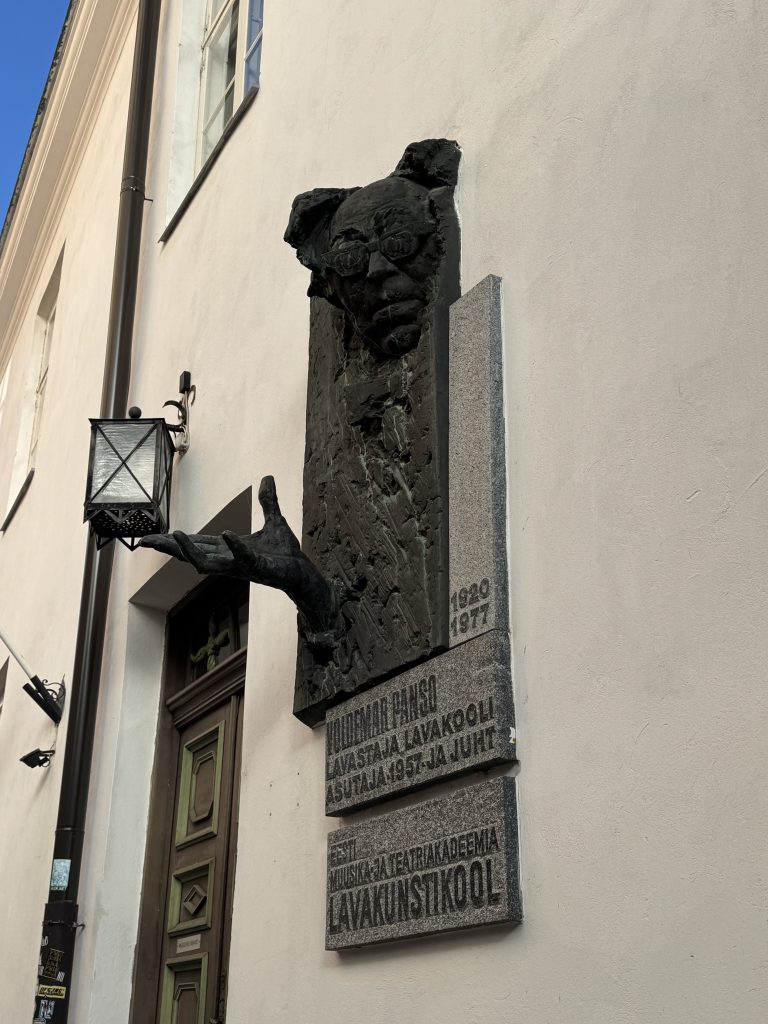
I have no clue who this is, but he’s striking.
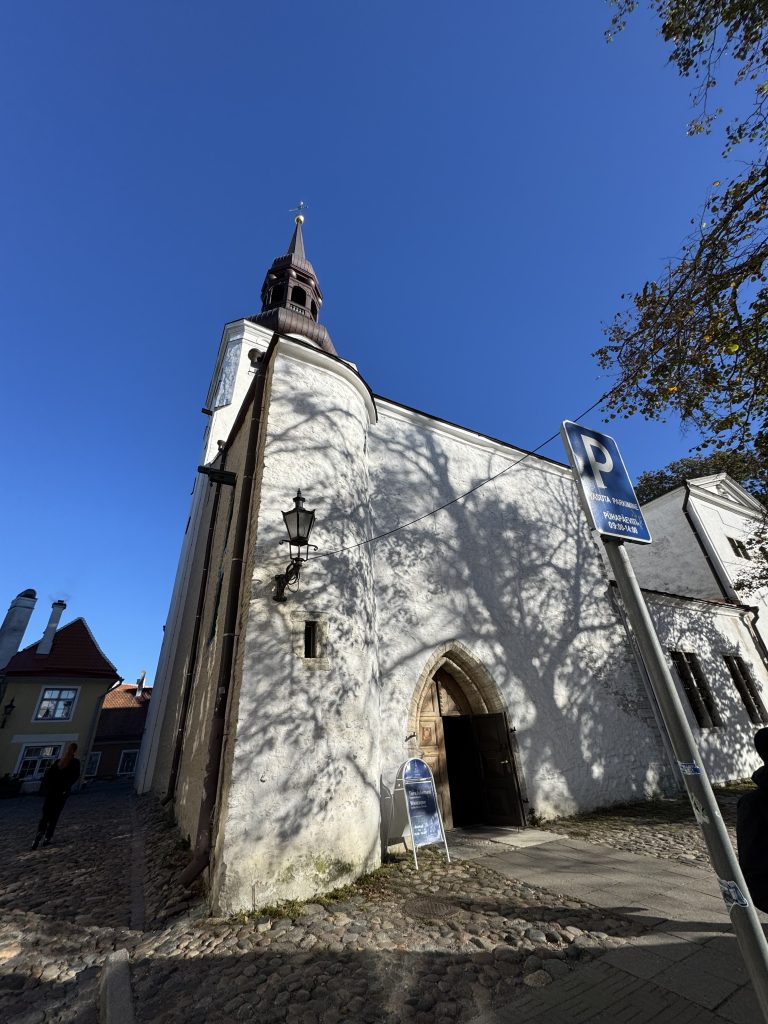
This is St Mary of the Rock, the oldest church here. The steps lead down, as the street level has risen 2.5 metres over 800 years. This is the main church for the Lutherans.
No state money goes to churches. Not a penny. Estonia is a secular state.
500 years ago, the first book published in Estonian was published.
Our city guide gave us a great quote, all about how universal education began when Martin Luther said that bibles should be translated into people’s everyday language. Once that was done, people had to learn to read.
“Writing begins with the church. Nationhood begins with a book.”
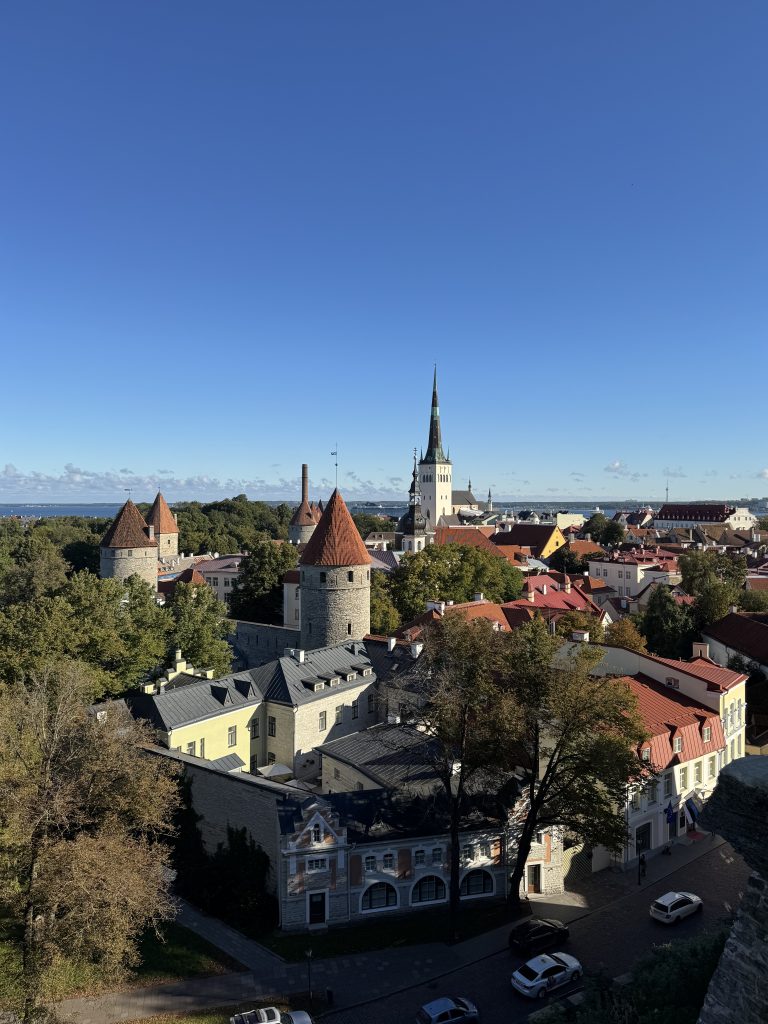
Our last ledge overlooking Old Town. Doesn’t it look fabulous?
And then we were down there. Some of the buildings have had their windows changed since they were first built, but they are still medieval.
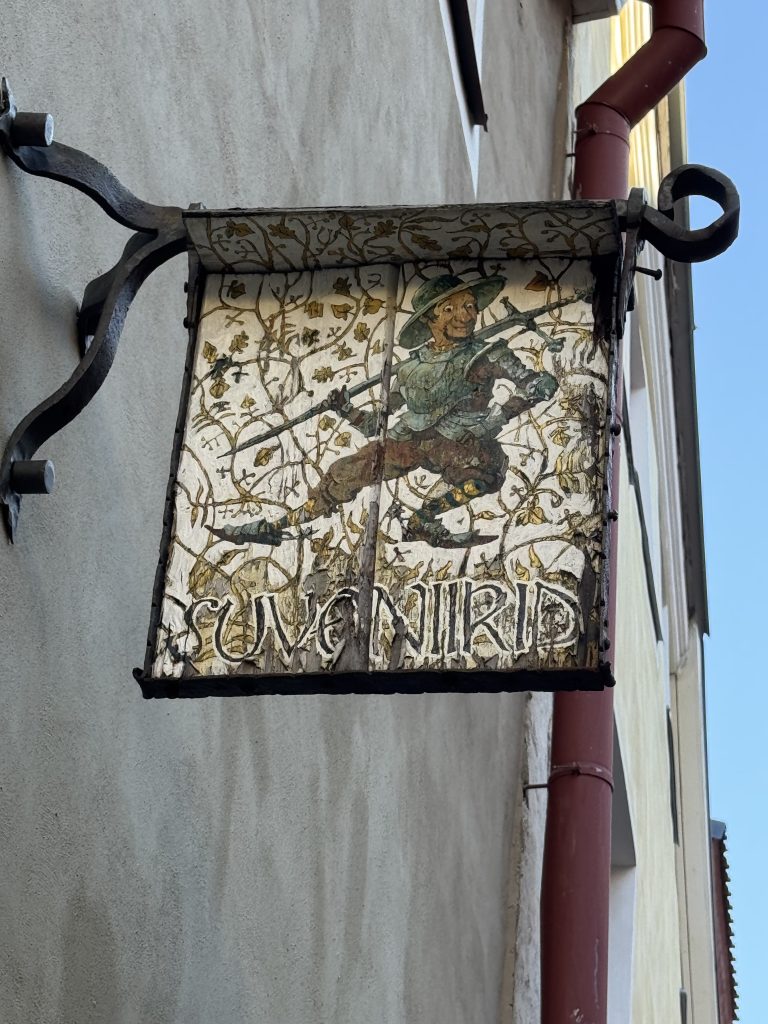
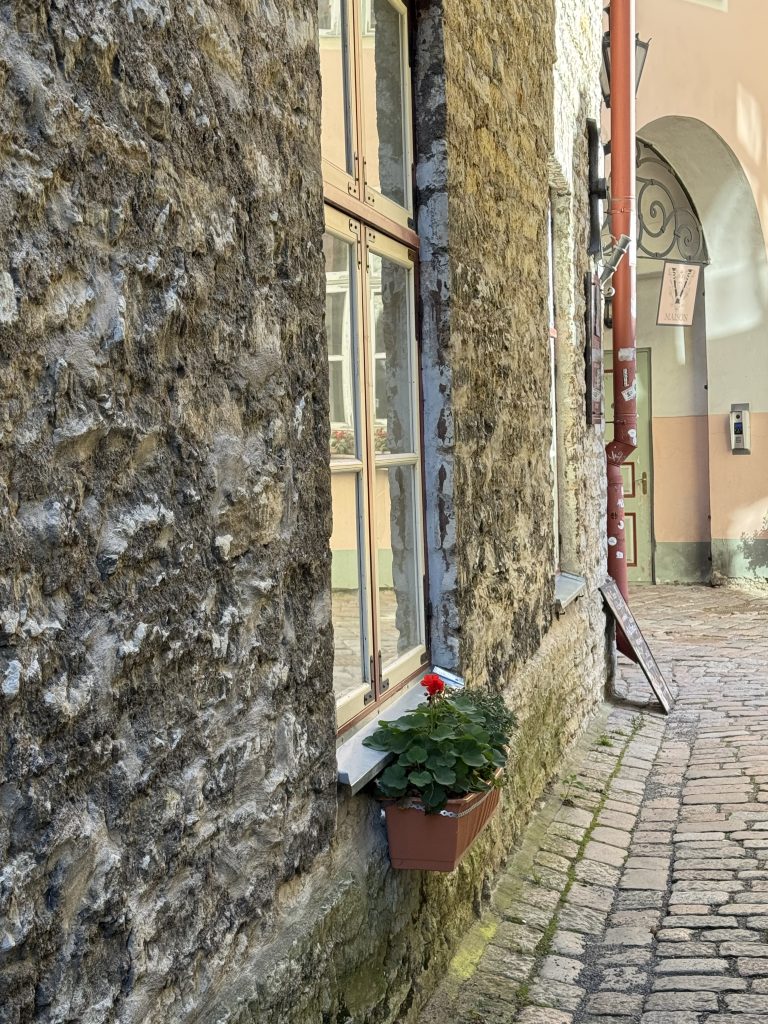
The cobbling on this street was nice and smooth. On most of the Old Town, it’s just rounded rocks placed haphazardly everywhere, at all levels. God knows how anyone with a pram or wheelchair would go.
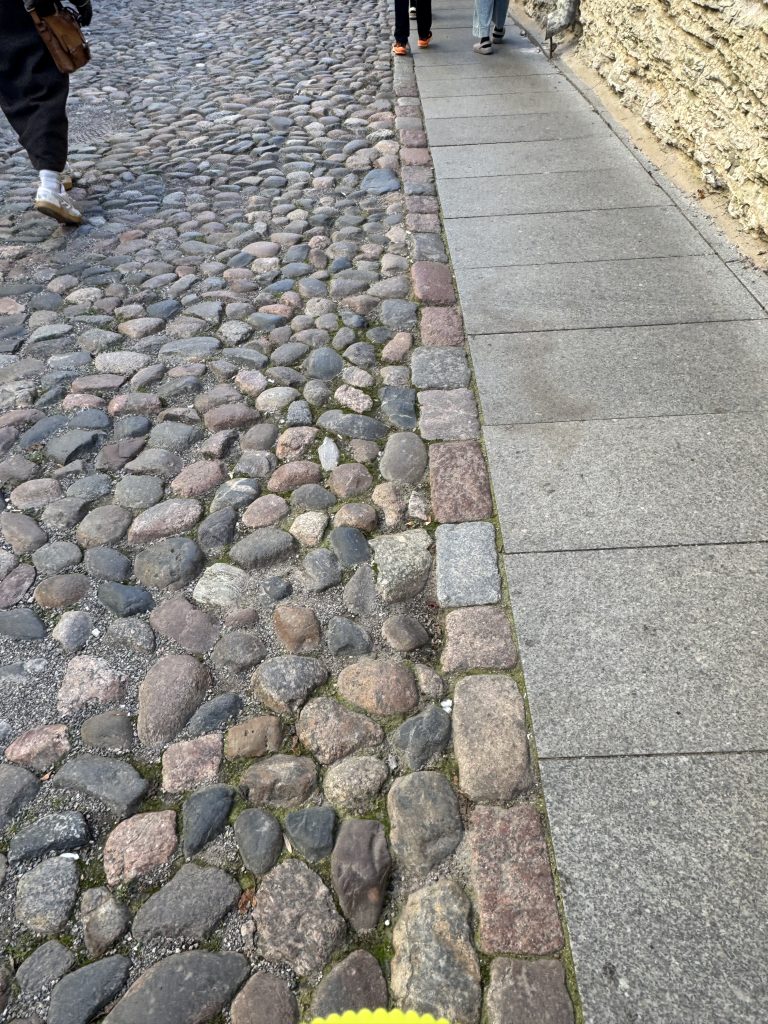
It was like a massage for the soles. This stretch of concrete was there to give hope to people using wheels, only to finish abruptly for no apparent reason.
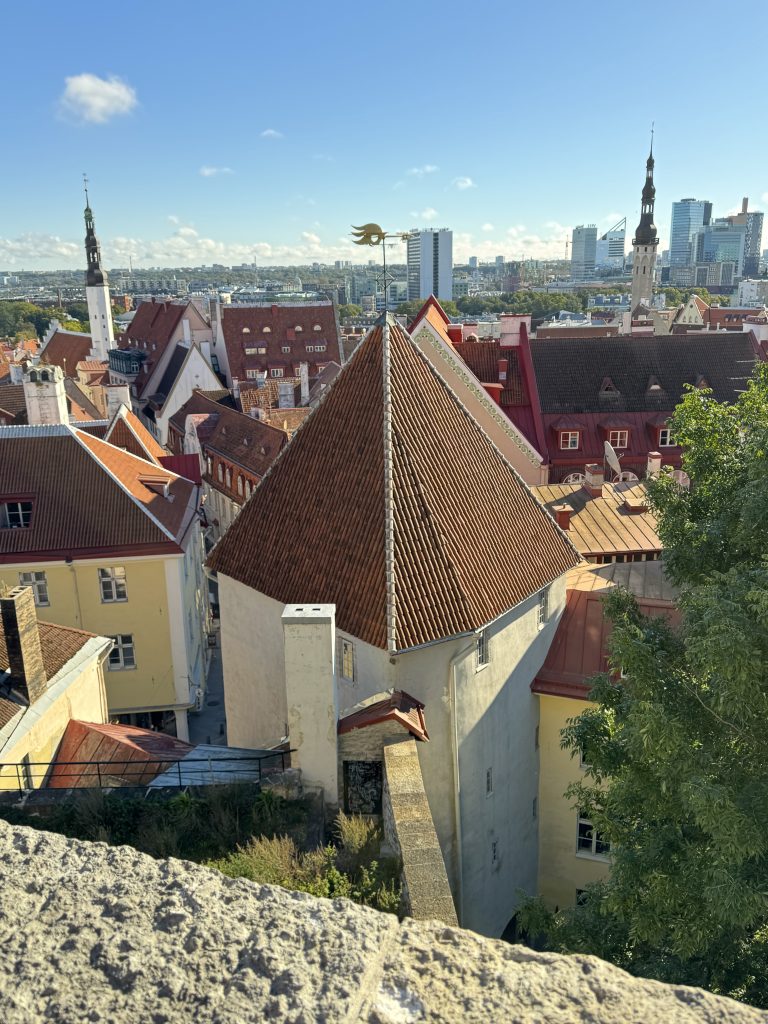
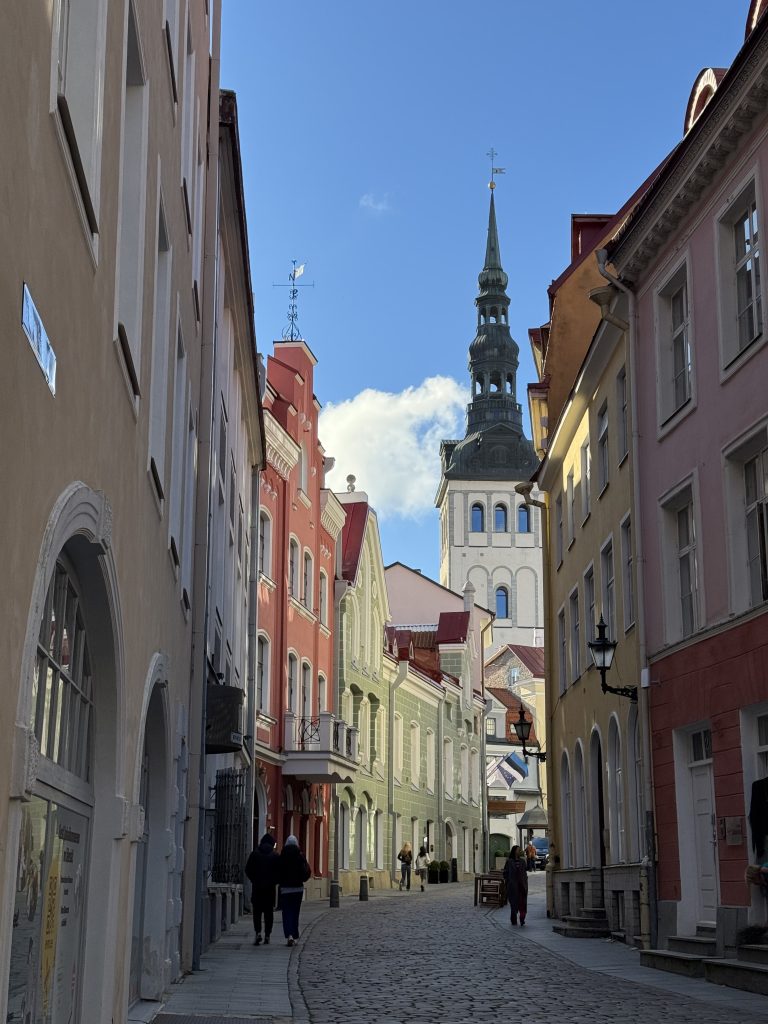
We had a medieval lunch together, which was surprisingly good. Then I had an hour to wander Old Town before I had to order an Uber to go back to the ferry terminal. My luggage was packed in a locker there.
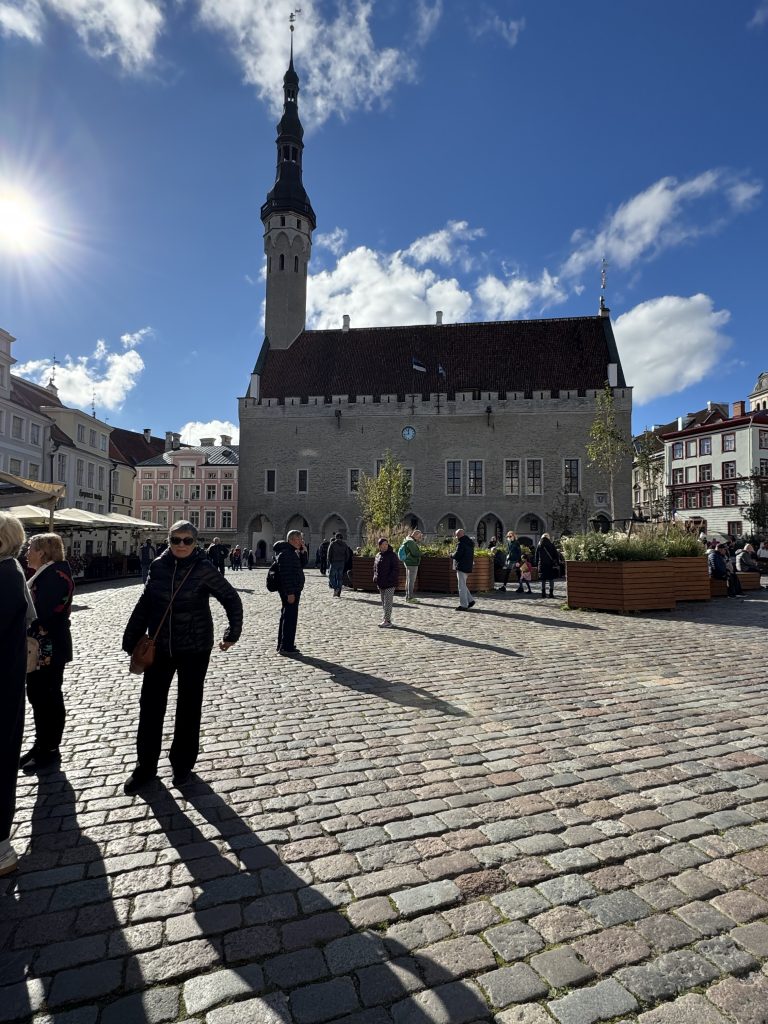
Town Hall 1322. It looks like a church, but it’s always been the town hall.
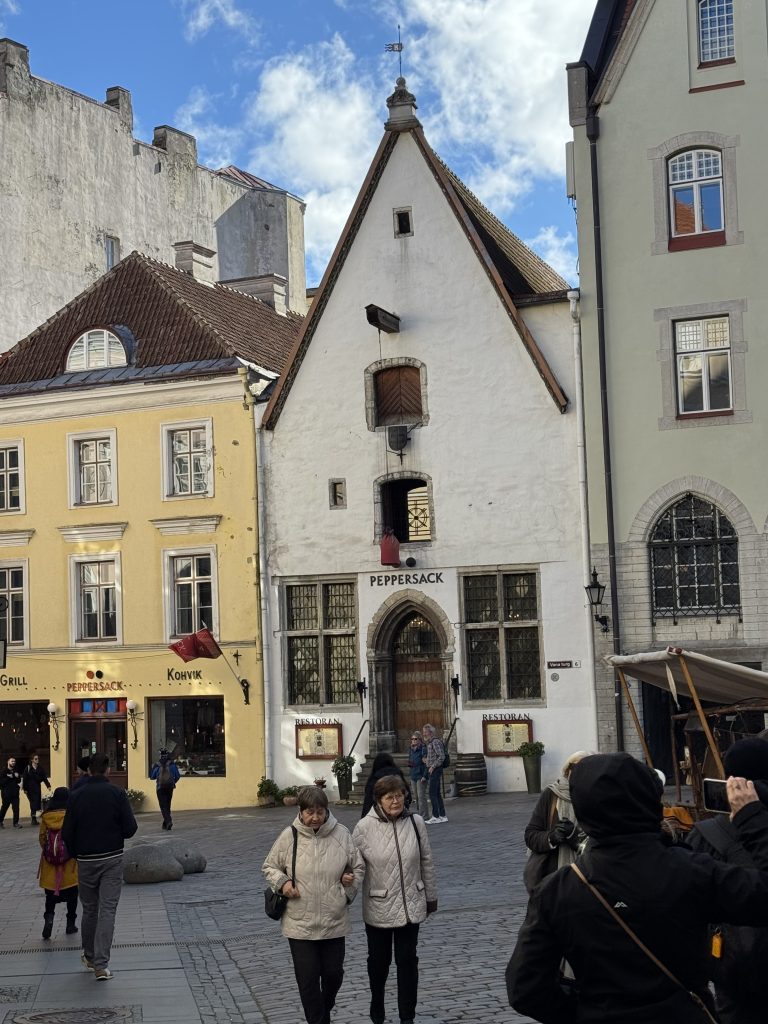
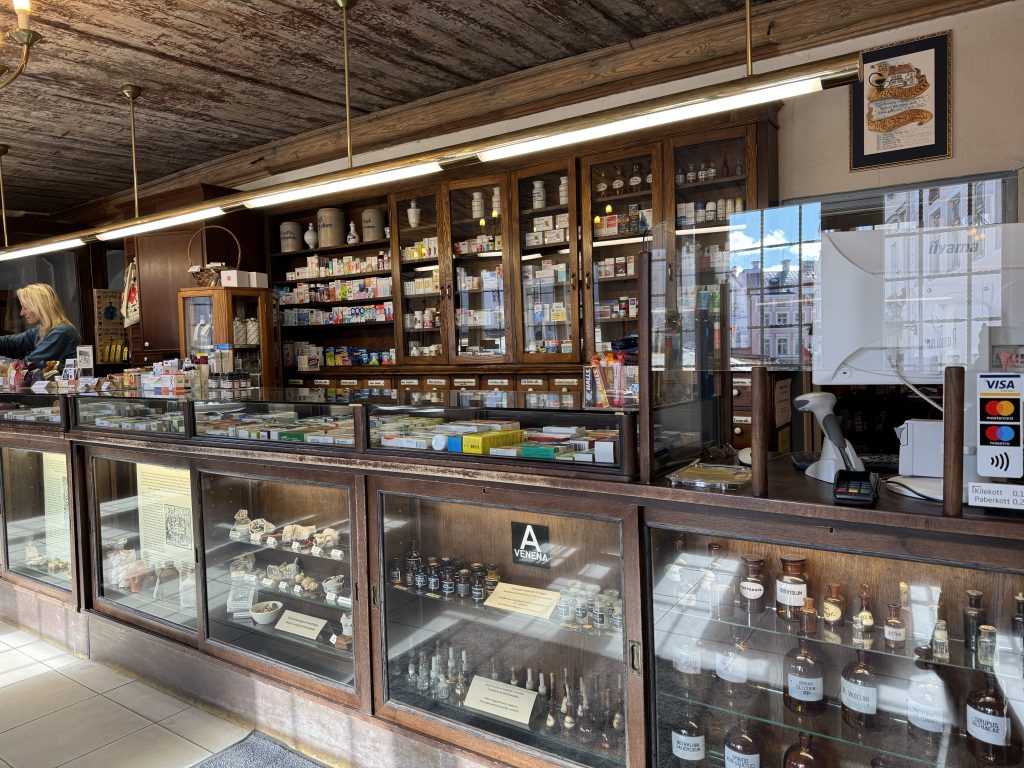
The pharmacy in the town square is the oldest in Europe. It’s been continuously running since 1422. I did my bit to keep the business going by buying some antihistamines.
At 2PM I retrieved my bags and went to the hotel to have a sneaky snooze and wait for Liga. The Scandinavian leg of this trip is finished, and now I’m on the last of the 10 holidays I have booked for this year: touring the Baltics with Liga and James.
Yes, James from Ireland is coming too. It’s going to be so much fun!
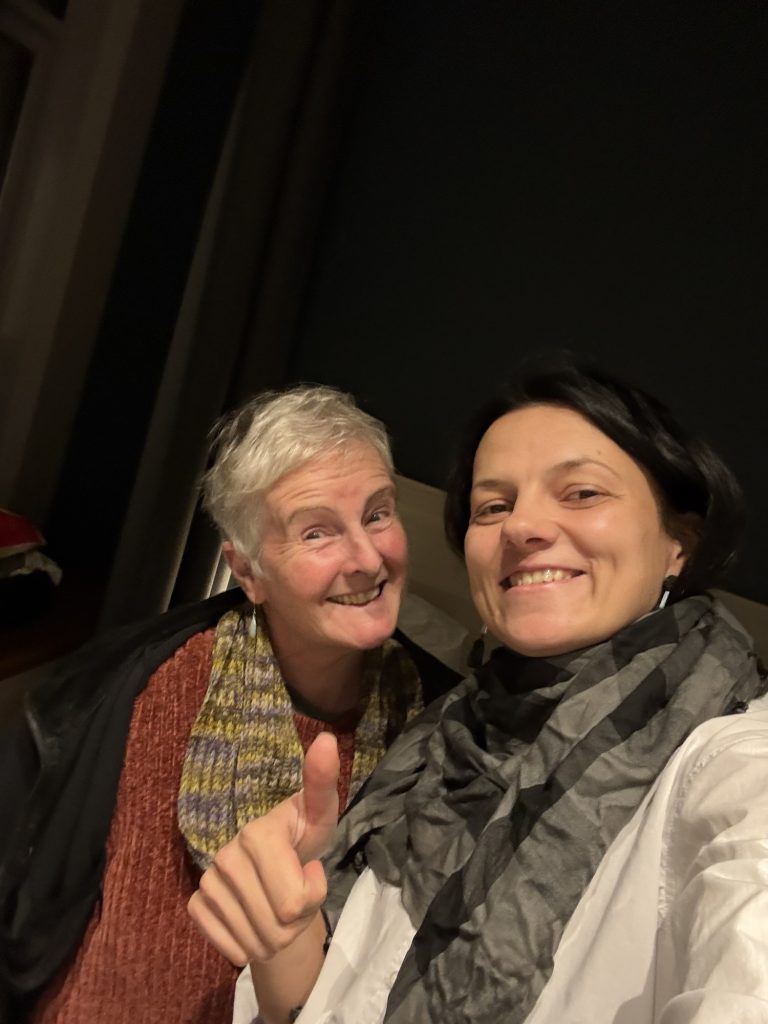
Dad joke of the day:

If you’ll be in Estonia for a day or two, I hope you get to see their traditional costumes. The women wear white, long sleeved blouses with beautiful embroidery and woollen pleated skirts in coloured stripes. As someone who likes working with textiles, I think you’d like them.
Tallinn is really beautiful! It’s my favourite of the three Baltic States’ capitals.
Curious to know which one will be yours (if you visit all three of them).
What a beautiful old town and I love the photo of the coloured buildings in the laneway.